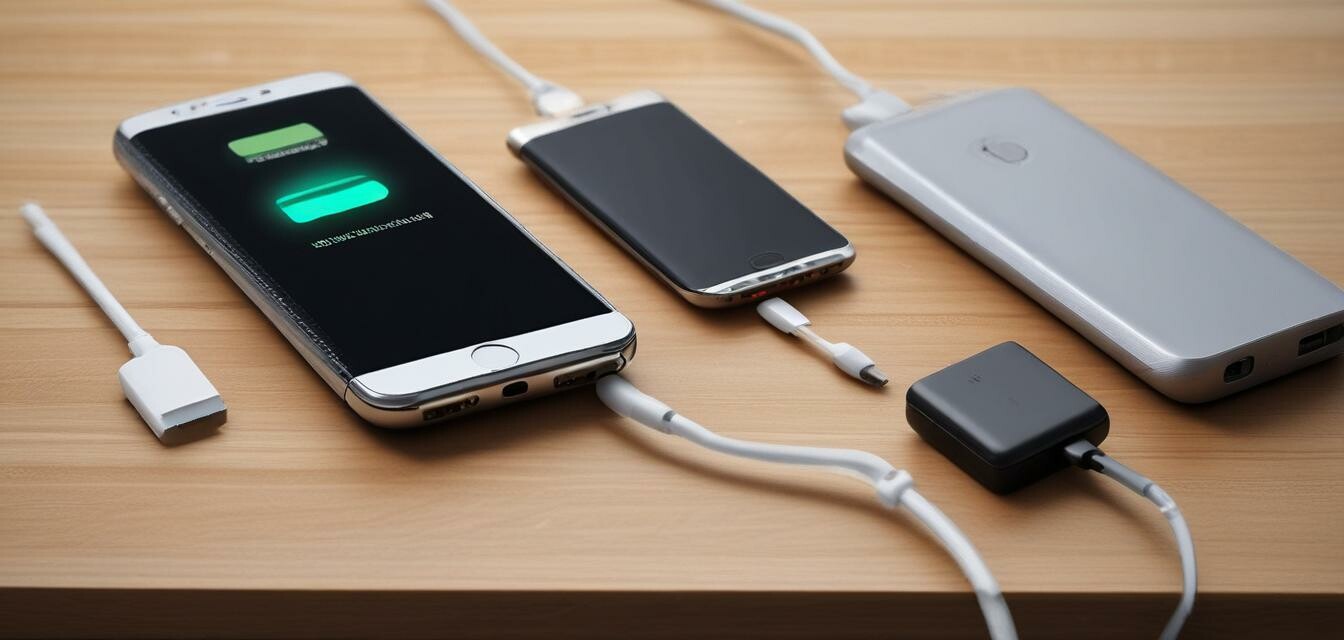
Combining Power Banks and Smart Devices: What You Need to Know
Key Takeaways
- Understanding compatibility is crucial for efficient charging.
- Higher-capacity power banks can charge multiple devices simultaneously.
- Regular maintenance and proper usage extend the lifespan of your power bank.
- Know the charging protocols of your devices for optimal performance.
Power banks have become essential accessories for anyone who uses smart devices—whether it be smartphones, tablets, or laptops. With the increasing reliance on these devices for work, communication, and entertainment, the ability to recharge them conveniently on-the-go is more important than ever. In this article, we will explore how to effectively use power banks with smart devices, ensure compatibility, and highlight the advantages of opting for higher-capacity options.
Understanding Compatibility
Many users often overlook compatibility between their power banks and smart devices. Here are some factors to consider:
| Factor | Explanation |
|---|---|
| Charging Ports | Ensure your power bank features the appropriate charging ports, such as USB-A, USB-C, or micro-USB. |
| Output Power | Look for power banks with output power that matches or exceeds your device’s requirements, typically 5V/1A for phones and 5V/2.1A or higher for tablets and laptops. |
| Charging Protocols | Be aware of charging protocols such as Quick Charge or Power Delivery for a faster charging experience. |
Benefits of Higher Capacity Power Banks
Higher-capacity power banks, which often boast capacity ratings of 20,000mAh and above, offer numerous advantages:
- Multiple Charges: A higher capacity allows you to charge your devices multiple times before needing to recharge the power bank itself.
- Simultaneous Charging: These power banks typically include multiple ports, enabling you to charge various devices at once.
- Longer Lifespan: With greater capacity, you can minimize charging cycles, potentially extending the lifespan of both your power bank and devices.
Tips for Using Power Banks with Smart Devices
Best Practices to Follow
- Always check the input and output ratings before use to ensure compatibility.
- Use the original cable that came with your device for optimal charging speed.
- Avoid letting your power bank completely discharge; this can damage its battery health.
- Store your power bank in a cool, dry place to maintain its performance.
Common Issues and Troubleshooting
Despite their efficiency, users may encounter issues when using power banks with smart devices:
| Issue | Solution |
|---|---|
| Device not charging | Check that the power bank is fully charged and try a different cable or port. |
| Slow charging speeds | Ensure your power bank supports the required charging protocol of the device. |
| Power bank overheating | Turn off the power bank and let it cool down before use. This can indicate a fault or excessive load. |
Choosing the Right Power Bank
When selecting a power bank for smart devices, consider the following criteria:
- Capacity: Choose a power bank that meets your charging needs based on how often you will need to recharge devices.
- Portability: If you're traveling, opt for a lighter, more compact option.
- Brand Reputation: Stick to reputable brands with good customer reviews; reliability is key.
- Price: While higher prices often indicate better quality, ensure you're getting value for your money.
Conclusion
Using power banks with smart devices is a great way to ensure that you're never without charge, but knowing how to effectively combine these tools is essential. By understanding compatibility, selecting the right capacity, and following best practices, you can make the most of your power bank investment.
Pros
- Convenient for on-the-go charging
- Can charge multiple devices simultaneously
- Reduces reliance on wall outlets
Cons
- Can be bulky and heavy
- Some models may have slow charging speeds
- Quality varies significantly by brand
For more tips on powering your devices, check out our Buying Guides or explore our insights in the News and Trends section.

